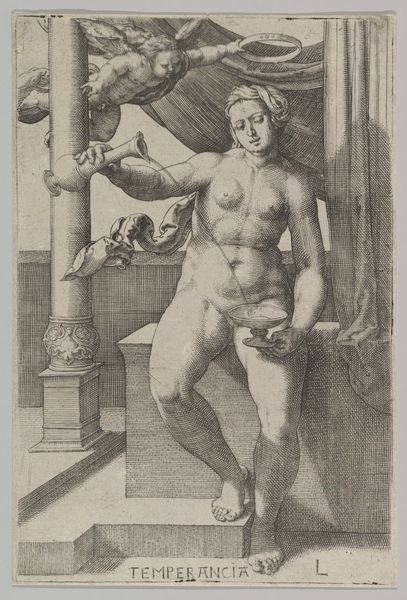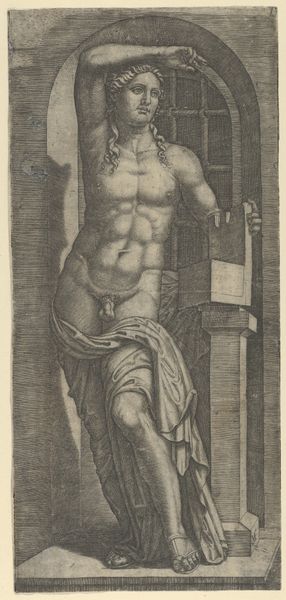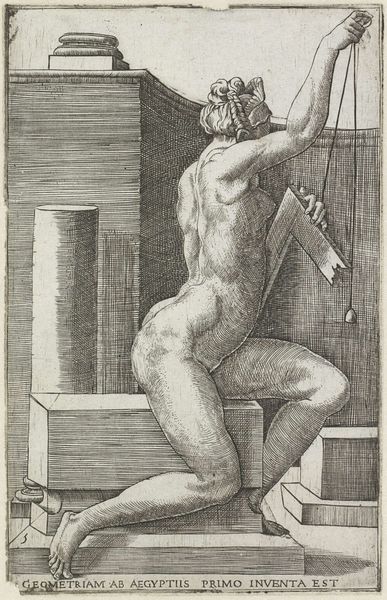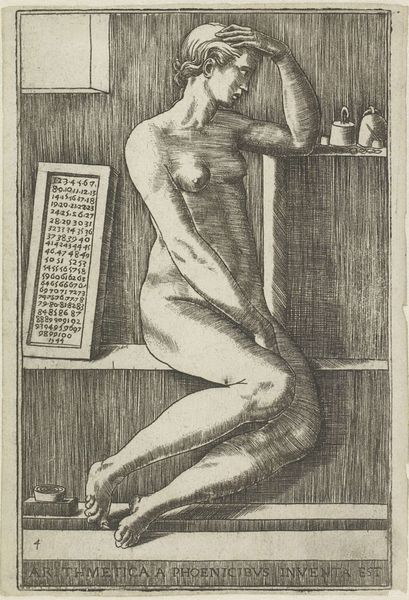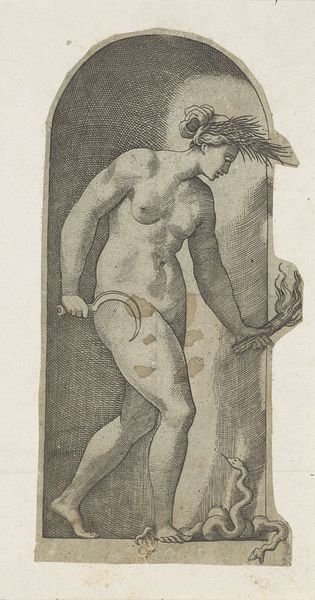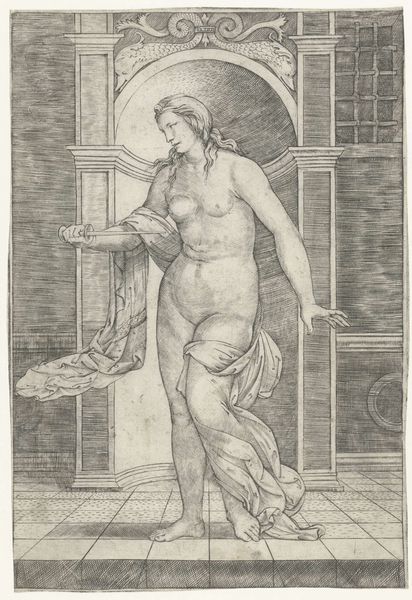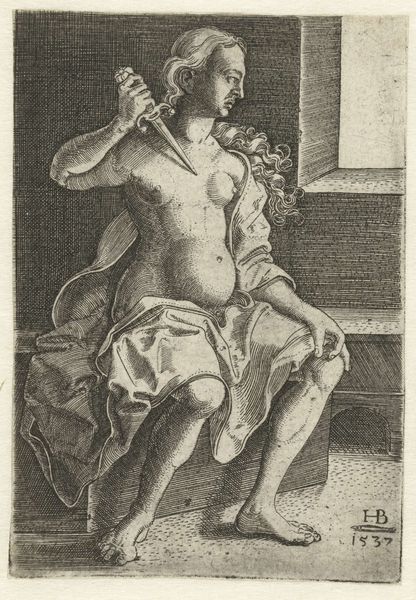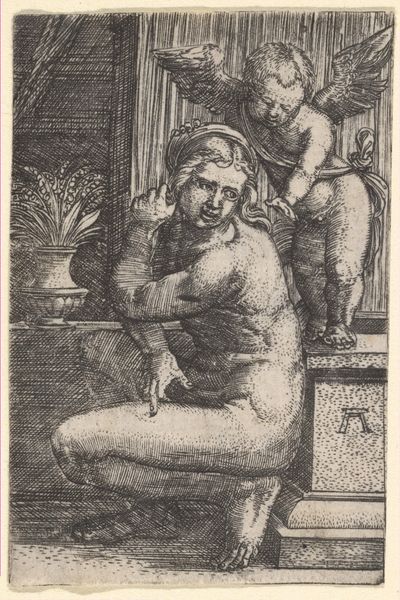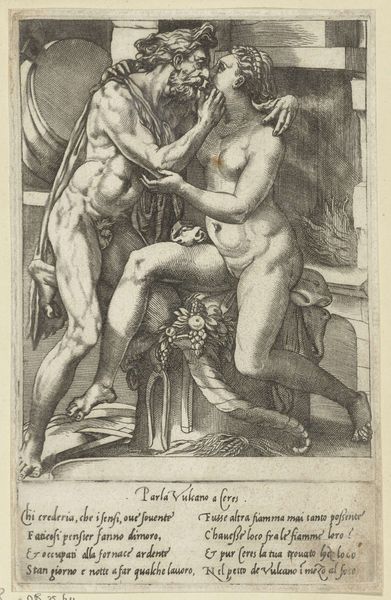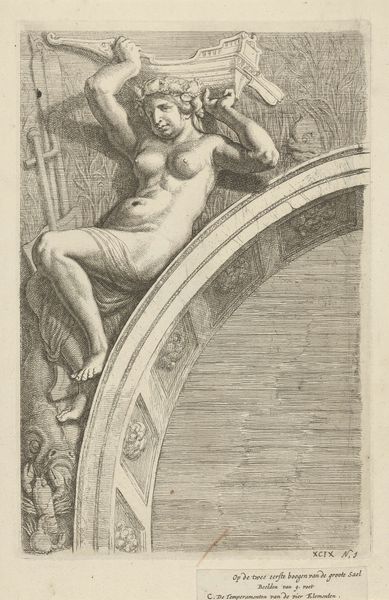
drawing, print, engraving
#
drawing
#
allegory
# print
#
figuration
#
form
#
female-nude
#
line
#
portrait drawing
#
history-painting
#
northern-renaissance
#
nude
#
engraving
Dimensions: sheet: 6 1/2 x 4 5/16 in. (16.5 x 11 cm)
Copyright: Public Domain
Curator: Lucas van Leyden's engraving, “Hope,” created around 1530, presents an intriguing allegory. The work is part of the collection here at The Met. Editor: My first impression is one of a peculiar sort of yearning. The woman seems trapped, or at least deeply confined, by this dense, architecturally oppressive space, while glancing toward a sky she can hardly reach. It has this dream-like, melancholic haze about it, even in its meticulous detail. Curator: It's true, the dense lines characteristic of engraving definitely lend it a weighty atmosphere. "Hope", here represented by the nude female figure, gazes out a window towards a distant rainbow, symbolizing a future promise. But the child angel overhead... What do you make of the floating figure, editor? Editor: Well, with that halo practically pressing down on her crown, there’s almost something a little suffocating about the kiddo's “hope”. As though even Hope, as a concept, can become a gilded cage. Her fingers outstretched almost look as though she were attempting to climb out from that place! Is that the intention of the artist? Or am I searching to hard? Curator: Van Leyden, as part of the Northern Renaissance, would've been aware of similar depictions and uses of allegorical representation within his circles. The “window to the world” idea, the rainbow signifying divine promise...it would all be part of the same visual language. The fascinating thing is the emotional layering, how that “weighty atmosphere”, as you put it, complicates the conventional meaning. Editor: Exactly! This goes way beyond just simple representation. What the message is for society. Look closely at the face and its averted gaze: it speaks of longing. A heavy desire but almost, tinged with doubt. Like, maybe, she doesn’t quite believe what she is looking toward is truly attainable? Curator: And, in an era of considerable social and religious upheaval in Northern Europe, particularly during the Reformation, “Hope,” feels… complicated. Perhaps it acknowledges how hope, as much as despair, involves its own kind of struggle? Editor: Perhaps, a work which seems to whisper: even in striving towards hope, one finds oneself confined by its limitations; or illuminated by its boundless and complex, open potential. Just my final thought!
Comments
No comments
Be the first to comment and join the conversation on the ultimate creative platform.
